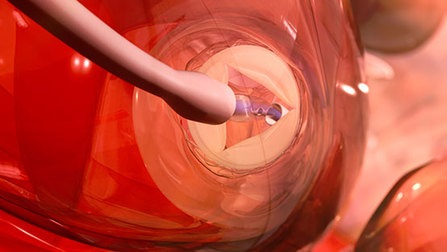
The data that Dvir presented at EuroPCR, as reported by Cardiovascular News, indicate that there is a significant increase in valve degeneration between five and seven years after a transcatheter aortic valve implantation (TAVI) device is implanted. This finding—as one would imagine given the explosive growth of TAVI and unbridled enthusiasm generated for this procedure—has led to substantial angst. But one must ask if Dvir is really describing a “rose” or a new entity.
Cardiac surgeons have long dealt with structural valve deterioration in biologic valves. For example, the early-generation stented biologic valve Ionescu-Shiley was associated with such extensive early deterioration that it was withdrawn from the market. In fact, as young cardiac surgeons in the early 1980s, we were basically told we could not use biologic valves except in exceptional circumstances by our mentors. Fortunately, better engineering and manufacturing processes led to better biologic valves with improved durability. This ushered in a tremendous growth in the use of surgical biologic valves in the aortic position. But despite this improvement, these valves still failed over time and the failure rate was inversely related to the age of the patient at the time of implant so that valves lasted longer in older patients who tended to not to last as long as the device itself. This led to recommendations to use biologic valves for aortic valve replacement in patients older than 60 years. Over time, the cardiac surgeon began to expand biologic valves to younger patient groups and evaluate durability; they have developed an extensive literature on this issue. It is this literature that is considered when Dvir’s work is discussed, so are we talking the same language?
Surgical structural valve deterioration has usually been measured as time to reoperation due to fail failure—or at least echocardiographic indices that would lead to reoperation even if not carried out. However, Dvir used a rise in mean gradient to over 20mmHg or increase of insufficiency to moderate or above when that was not present at 30 days. This is vastly different from what has been used in the surgical literature and one wonders if this very stringent criteria were used for surgical valves what the rate of this new definition of degeneration would be? Furthermore, most of these bovine pericardial TAVI valves failed with insufficiency that was generally central. Surgeons see surgical bovine pericardial valves fail generally with stenosis from leaflet calcification. The finding in this study is reminiscent of failures due to engineering design and manufacture in early generation surgical valves and is likely to be improved in the newer generation already in use.
This presentation by Dvir does and should cause us all to pause and think about valve degeneration as we move to younger and lower risk patients but cannot be directly compared to the existing surgical literature of definitions of valve degeneration and durability. Harmonisation of definitions and prolonged (10 years’ minimum) follow up of these valves is necessary. With several randomised TAVI vs. surgical aortic valve replacement trials either completed or on going we have a unique opportunity to use a standard definition of valve degeneration and compared surgical valves to TAVI valves. Until we get that data, it would appear that a rose by any other name is still a rose.
Michael Reardon is at Department of Cardiovascular Surgery, Houston Methodist DeBakey Heart & Vascular Center, Houston, Texas, USA. He was the lead author of the CoreValve US Pivotal High Risk Trial.












